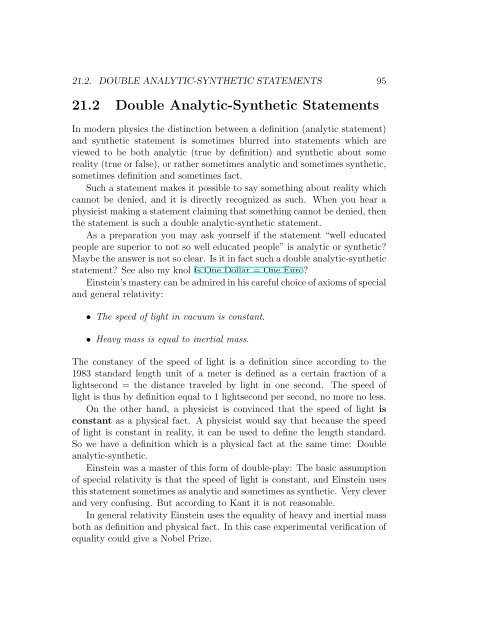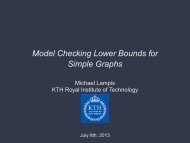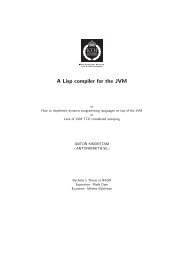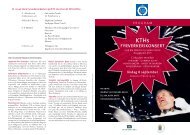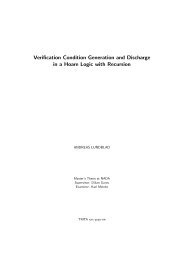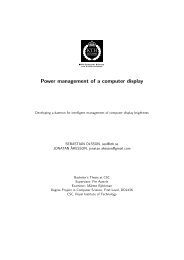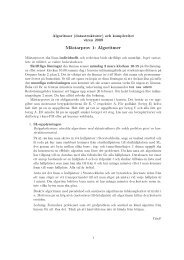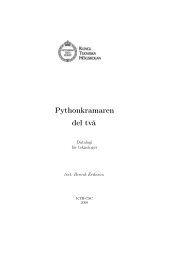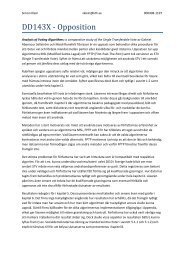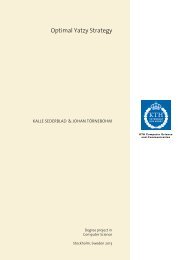Dr Faustus of Modern Physics - Department of Speech, Music and ...
Dr Faustus of Modern Physics - Department of Speech, Music and ...
Dr Faustus of Modern Physics - Department of Speech, Music and ...
You also want an ePaper? Increase the reach of your titles
YUMPU automatically turns print PDFs into web optimized ePapers that Google loves.
21.2. DOUBLE ANALYTIC-SYNTHETIC STATEMENTS 95<br />
21.2 Double Analytic-Synthetic Statements<br />
In modern physics the distinction between a definition (analytic statement)<br />
<strong>and</strong> synthetic statement is sometimes blurred into statements which are<br />
viewed to be both analytic (true by definition) <strong>and</strong> synthetic about some<br />
reality (true or false), or rather sometimes analytic <strong>and</strong> sometimes synthetic,<br />
sometimes definition <strong>and</strong> sometimes fact.<br />
Such a statement makes it possible to say something about reality which<br />
cannot be denied, <strong>and</strong> it is directly recognized as such. When you hear a<br />
physicist making a statement claiming that something cannot be denied, then<br />
the statement is such a double analytic-synthetic statement.<br />
As a preparation you may ask yourself if the statement “well educated<br />
people are superior to not so well educated people” is analytic or synthetic?<br />
Maybe the answer is not so clear. Is it in fact such a double analytic-synthetic<br />
statement? See also my knol Is One Dollar = One Euro?<br />
Einstein’s mastery can be admired in his careful choice <strong>of</strong> axioms <strong>of</strong> special<br />
<strong>and</strong> general relativity:<br />
• The speed <strong>of</strong> light in vacuum is constant.<br />
• Heavy mass is equal to inertial mass.<br />
The constancy <strong>of</strong> the speed <strong>of</strong> light is a definition since according to the<br />
1983 st<strong>and</strong>ard length unit <strong>of</strong> a meter is defined as a certain fraction <strong>of</strong> a<br />
lightsecond = the distance traveled by light in one second. The speed <strong>of</strong><br />
light is thus by definition equal to 1 lightsecond per second, no more no less.<br />
On the other h<strong>and</strong>, a physicist is convinced that the speed <strong>of</strong> light is<br />
constant as a physical fact. A physicist would say that because the speed<br />
<strong>of</strong> light is constant in reality, it can be used to define the length st<strong>and</strong>ard.<br />
So we have a definition which is a physical fact at the same time: Double<br />
analytic-synthetic.<br />
Einstein was a master <strong>of</strong> this form <strong>of</strong> double-play: The basic assumption<br />
<strong>of</strong> special relativity is that the speed <strong>of</strong> light is constant, <strong>and</strong> Einstein uses<br />
this statement sometimes as analytic <strong>and</strong> sometimes as synthetic. Very clever<br />
<strong>and</strong> very confusing. But according to Kant it is not reasonable.<br />
In general relativity Einstein uses the equality <strong>of</strong> heavy <strong>and</strong> inertial mass<br />
both as definition <strong>and</strong> physical fact. In this case experimental verification <strong>of</strong><br />
equality could give a Nobel Prize.


